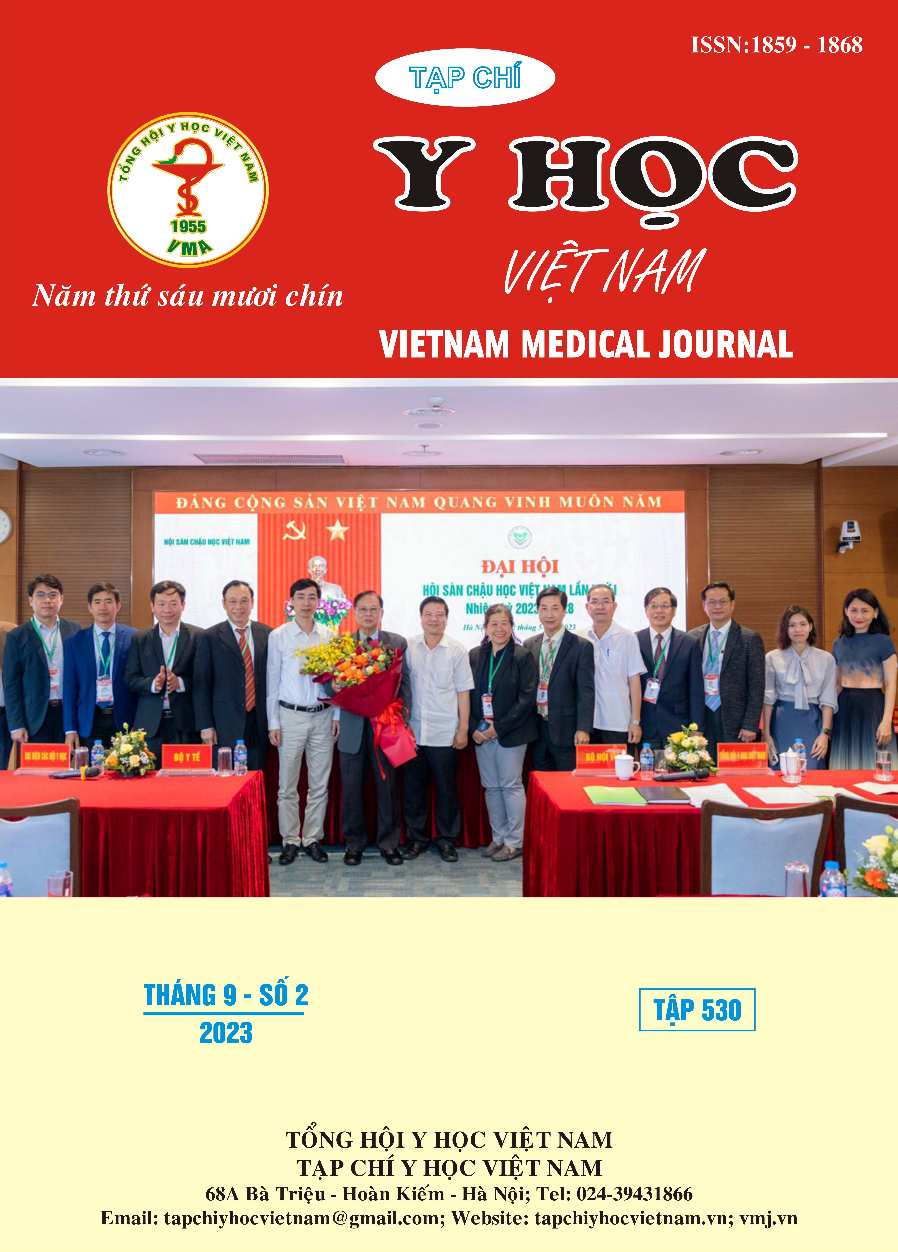CHARACTERIZATION OF MAIN SEPTUM OF THE SPHENOIDAL SINUS ON MULTI-SLICE COMPUTED TOMOGRAPHY AND ITS ROLE DURING TRANSSPHENOIDAL APPROACHES TO THE SELLA TURCICA
Main Article Content
Abstract
Purposes: There were many anatomical variations of the sphenoidal sinus such as sphenoid sinus pneumatization, posterior ethmoid sphenoid cells (Onodi cells), sphenoidal septum and its involvement of neurovascular structures. This study aimed to evaluate the height of the main septum of the sphenoid sinus, as well as its type (bone, membranous, or mixed) and frequency in the pre- endoscopic functional sinus surgery on the group of patients at Hanoi Medical University Hospital. Material and methods: A retrospective descriptive cross-sectional analysis of the main sphenoidal septum on 149 patients (75 women, 74 men) before functional endoscopic sinus surgery who underwent MSCT without intravenous contrast to measure the height of the main septum of the sphenoid sinus and the main septum type. MSCT imaging procedure from frontal sinus to the end of sphenoid sinus with 0.625mm thin layers, reconstructed in coronal plane perpendicular to hard palate and axial parallel to hard palate. The main septum height was measured on the coronal plane from the inferior wall to the superior wall, measured in a straight line (if the main septum is straight) or curved (if the main septum is irregular). The main septum of the sphenoid sinus was divided into 3 types: completely bony, semi-membranous, and completely membranous. Results: The mean age of the group of patients was 46.6±15, the lowest age was 8, the highest was 77. The average height of the main septum of the sphenoid sinus was 19.7±6.4 mm, the lowest was 7 mm, the highest was 33 mm. Among 149 patients, there were 67 patients (accounting for 45%) the main septum was completely bone type. There were 77 patients (accounting for 51%) with mixed main septum (semi-membranous). Only 6 patients (4%) of the main septum of the sphenoid sinus were completely membranous. There was no statistically significant difference in the height of the main septum of the fully membranous sinus with the bony or semi-membranous type. However, there was a statistically significant difference (p=0.026) in height between the main septum of the sphenoid sinus of the fully bony type and the semi-membranous type. Conclusions: The main septum of sphenoidal sinus needs to be fully evaluated on sinus MSCT before transsphenoidal surgery to access the pituitary to avoid potential complications from these anatomical changes
Article Details
Keywords
transsphenoidal surgery, multi-slice computed tomography, main septum of sphenoid sinus.
References
2. L.M. Cavallo, A. Messina, P. Cappabianca, F. Esposito, E. de Divitiis, P. Gardner, M. Tschabitscher, Endoscopic endonasal surgery of the midline skull base: anato- mical study and clinical considerations, Neurosurg. Focus 19 (2005) 1–14, https:// doi.org/10.3171/ foc.2005.19.1.3.
3. Sirikci A, Bayazit YA, Bayram M, Kanlikama M. Variations of sphenoid and rerlated structures. Eur Radiol. 2000; 10(5):844-848.
4. Cashman EC, McMahon PJ, Smyth D. Computed tomography scans of paranasal sinuses before functional endoscopic sinus surgery. World J Radiol. 2011; 3(8): 199-204.
5. Abdullah BJ, Arasaratnam S, Kumar G, Gopala K. The sphenoid sinuses: computed tomography assessment of septation, relationship to the internal carotid arteries, and sidewall thickness in the Malaysian population. J HK Coll Radiol. 2001; 4:185-188.
6. D. Sareen, A.K. Agarwal, J.M. Kaul, A. Sethi, Study of sphenoid sinus anatomy in relation to endoscopic surgery, Int. J. Morphol. 23 (2005) 261–266, https://doi. org/10.4067/S0717-95022005000300012.
7. N. Štoković, V. Trkulja, I. Dumić-Čule, I. Čuković-Bagić, T. Lauc, S. Vukičević,
L. Grgurević, Sphenoid sinus types, dimensions and relationship with surrounding structures, Ann. Anat. 203 (2016) 69–76, https://doi.org/10.1016/j.aanat.2015.02. 013.
8. R. Dündar, Radiological evaluation of septal bone variations in the sphenoid sinus, J. Med. Updat. 4 (2014) 6–10, https://doi.org/10.2399/jmu.2014001002.
9. G. Kayalioglu, M. Erturk, T. Varol, Variations in sphenoid sinus anatomy with special emphasis on pneumatization and endoscopic anatomic distances, Neurosciences 10 (2005) 79–84 http://www.ncbi.nlm.nih.gov/pubmed/22473192, Accessed date: 5 April 2019.
10. Idowu OE, Balogun BO, Okoli CA. Dimensions, septation, and pattern of pneumatization of the sphenoidal sinus. Folia Morphol. 2009; 68(4):228-232.


